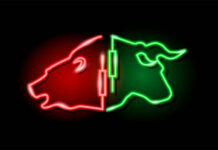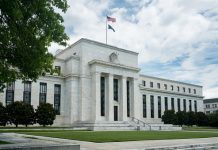In focus today
We wish our readers a Happy New Year on this first trading day of 2024.
Today’s calendar looks light with the most important data release being the Eurozone M3 measure of money supply for November. M3 has been on a downward trajectory since ECB started their tightening policy, which bodes negative for the economic outlook.
Final December manufacturing PMIs will also be released for a wide range of countries, including Sweden, Spain, Italy, Germany, Europe and UK.
For the remainder of the week focus will be tilted mainly towards the US, as we get the ISM manufacturing index, JOLTs and FOMC minutes on Wednesday, while the December Jobs Report and ISM services index are due for release on Friday. We look for non-farm payrolls printing at +170k and average hourly earnings growth coming in at +0.2% m/m.
In Europe, the most important release will be preliminary Eurozone HICP for December on Friday. After declining for seven consecutive months, we expect headline HICP to turn north, creeping higher to 2.9% y/y, as the base effects from energy prices are fading. Core inflation is expected to keep declining to 3.3% y/y. Inflation numbers out of Spain on Friday surprised to the downside, while figures from Germany and France released on Thursday should give us an indication of what to expect from HICP on Friday.
Economic and market news
What happened during Christmas: In the absence of any significant macro news, the ‘everything’ rally continued in the trading days between Christmas and New Year. Lower yields and higher equities were the overarching theme as growing expectations for monetary policy easing continue to support the market sentiment. Markets are now pricing in 150bp and 165bp of rate cuts in 2024 for the Fed and the ECB, respectively. Over the last two weeks, the 10Y UST yield has dropped 8bp to 3.85%, while the MSCI AC World Index is up by roughly 1.5%.
On the geopolitical front, tensions are still ongoing with Israel announcing its plans to shift tactics, withdrawing thousands of its troops from Gaza, while Yemen’s Houthi rebels are still attacking pro-Israeli shipping in the Red Sea. Biden’s hope of a new international maritime force, focusing on restoring security, remains unsettled, especially since the USS Gerald R. Ford aircraft carrier was called back from the Middle East yesterday. In respect of Russia’s invasion of Ukraine, talks have been held among G7 with regards to confiscating USD 300bn of Russian assets, and channelling these funds to Ukraine. This could help dampen the growing scepticism of providing new funding packages to Ukraine seen in both Europe and the US.
What happened overnight: NBS PMI manufacturing for December surprised to the downside, printing 49.0 (consensus: 49.5, November: 49.4), while the broader Caixin PMI manufacturing came in at 50.8, surprising to the upside and slightly higher than the November print of 50.7.
Equities: Amid a strong Christmas rally, equities retreated on Friday. The narrative has been the same over the holidays: Yields and repricing of central banks sending a broad range of sectors higher, primarily small caps. Interestingly, large caps cyclicals have flat-lined while mostly defensives (utilities, staples, health care, financials) were beating the tape last week. Weak macro and probably fatigue after a ninth-straight weekly gain triggered some selling ahead of New Year with S&P -0.3% and small cap Russell 2000 -1.5%. US futures are slightly higher again this morning.
FI: The market closed on a positive note as 10Y US Treasuries and Bunds declined by some 40bp during December. The market is factoring in almost 6-7 rate cuts from ECB and the Federal Reserve in 2024. Given the solid rally we have seen in Q4, we expect a slower movement from now as we need to see the more evidence in terms of lower inflation and limited wage pressure for the many rate cuts to materialise in 2024. We do not believe in as many rate cuts from ECB, but the easing cycle will be begin in 2024, so there a risk of rebound in yield/rates during 2024.
FX: Summarizing the FX year of 2023, we note that the USD ended up in the losing camp within G10, together with NZD, NOK and JPY, despite the two latter’s comebacks during Q4. CHF stands out as the top performer through the year (vs USD) but notably the SEK also closed 2023 as a positive year, after a remarkable comeback during H2. Looking into 2024, we foresee USD strength and Scandie weakness over the medium-term horizon.












